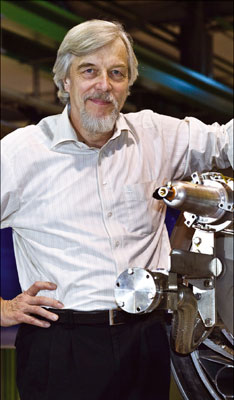
At the end of January, a small fraction of CERN decamped to Chamonix along with experts from around the world – not to ski but to work out the plans for the coming year’s LHC run. It is a tradition that began with CERN’s previous accelerator, the Large Electron–Positron (LEP) collider, and time and again it has proved its worth.
Chamonix is an important fixture on the CERN calendar, not only because it sets the agenda for the coming year but also because it is particle physics in microcosm. Chamonix embodies the spirit of our field. It is an intense week of discussion and debate, involving a wide community base drawn from CERN, the LHC experiments and beyond. The CERN machine advisory committee is there and everyone has the chance to air opinions, before the meeting invariably winds up with a broad consensus.
It is this ability to reach consensus that makes our science so remarkable. Particle physicists can be every bit as opinionated and attached to their own ideas as anyone else but, at the end of the day, we are all united by the overriding goal of doing our research and finding out more about this wonderful universe that we live in. That is what allows us to reach consensus – and always has. In the past, whenever a big particle-physics project involved 50 people or so – or even the 300 or so from my old LEP experiment, OPAL – consensus was maybe not so surprising. But with collaboration sizes today numbering in the thousands, this model still holds true and management gurus are beginning to take notice. My message to them? It is amazing what people can do when they are united by a common goal.
So what of this year’s deliberations at Chamonix? They were all about maximizing discovery potential while minimizing risk to the LHC and the experiments. The problems with the LHC’s high-current splices, which became so painfully evident in 2008 when one of them failed and put the machine out of action, are not completely resolved. That is why the LHC is not yet running at its full design energy of 7 TeV per beam. In 2010, 3.5 TeV per beam was selected as a safe energy to run at for the LHC’s first physics, and experience has clearly demonstrated the wisdom of that choice.
The big question at Chamonix this year was whether we could safely move up a notch. Some argued for; others against. But at the workshop’s conclusion the participants were united in recommending that we stay at 3.5 TeV until at least the end of 2011.
Why? Well, we know that the LHC performs fantastically at this energy, and that exciting new physics is potentially within our reach. We have also developed new techniques to sniff out bad splices that could spoil the show if we go to a higher energy. These will be in place by the end of 2011, giving us the input needed to take a fully informed decision on a possible increase in energy at next year’s Chamonix meeting.
Being CERN’s director-general is sometimes a tough job but the consensual model of particle physics makes some aspects easy
Which brings me to the next big question on the table at Chamonix: what about next year? It has long been clear that with lengthy warm-up and cool-down periods, an annual cycle does not make sense for major maintenance shutdowns at the LHC. And we also know that the first long shutdown involves substantial work to make good the high-current interconnects that will allow us to reach the design energy of 7 TeV per beam. Originally foreseen for 2012, it was almost a foregone conclusion that the Chamonix workshop would recommend postponing the first long shutdown to 2013, and that is indeed what happened.
The reason is that the LHC’s performance in 2010 was so good, with the promise of much better to come. That led to simple extrapolations clearly showing that if there’s new physics to be found in the 3.5 TeV-per-beam energy range, two years of running will be enough to find it. On the other hand, one year alone could leave us with just tantalizing hints. Under these circumstances, stopping at the end of 2011 makes little sense.
Taken together, the recommendations that emerged from Chamonix optimize the LHC’s discovery potential, not just for 2011 but for the longer term as well, and they do it while minimizing the risk of damage to the LHC’s infrastructure.
Being CERN’s director-general is sometimes a tough job but the consensual model of particle physics makes some aspects easy, as Chamonix once again showed this year. Following a recommendation arrived at by consensus, which has the buy-in of the whole community, is a simple choice to make. That consensus is our strength.








